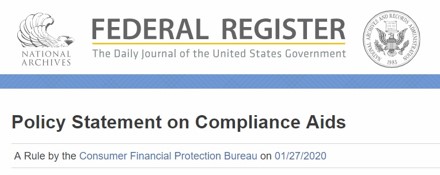Week in Regulation
February 3, 2020
A Quiet End to January
Last week saw plenty of news being made in Washington DC – just not on the regulatory side. The final week of January proved to be a sparse one in the pages of the Federal Register. No single rulemaking exceeded $4 million in stated costs or savings. Across all rulemakings, agencies published $1.2 million in total net costs but cut 52,733 hours of annual paperwork.
REGULATORY TOPLINES
- 2020 Proposed Rules: 38
- 2020 Final Rules: 52
- 2020 Total Pages: 5,888
- 2020 Final Rule Costs: $3.2 billion
- 2020 Proposed Rule Costs: $3.7 million
Perhaps the most notable rule of the week came from the Department of Labor (DOL), as it rescinded an Obama-era rule in interesting fashion. The rule rescinds a 2011 rule regarding “Nondisplacement of Qualified Workers Under Service Contracts.” This action comes as a result of Executive Order (EO) 13,897, the primary purpose of which was to revoke EO 13,495. EO 13,495 was the order that provided the authority for the Obama-era rule. DOL states that, “Since the authority for these regulations no longer exists, the Department for good cause hereby finds that it is unnecessary and impracticable to afford notice and comment procedures,” and can simply finalize the rescission as such. This rescission rule does not include a discussion of its EO 13,771 impact but does specify that it eliminates a paperwork requirement created under the original rule, thereby cutting 57,503 hours.
TRACKING THE REGULATORY BUDGET
While there were two deregulatory actions (as defined under EO 13,771), neither changed the overall fiscal year (FY) 2020 regulatory budget in a measurable way. The Trump Administration expects to reach $51.6 billion in cumulative net savings in FY 2020. To date in the fiscal year, agencies have finalized 46 deregulatory actions and 13 regulatory actions, totaling $2.9 billion in quantified total net costs.
THIS WEEK’S REGULATORY PICTURE
This week, the Consumer Financial Protection Bureau (CFPB) establishes a new category of guidance document.

Source: https://www.federalregister.gov/documents/2020/01/27/2020-00648/policy-statement-on-compliance-aids
CFPB this week published a notice that it was creating a new category of guidance document called Compliance Aids. The new category is meant to clarify that these documents are meant to help in achieving compliance with existing requirements but do not establish new requirements.
The change likely stems, at least in spirit, from two executive orders signed by President Trump in October aimed at reining in guidance documents. One of those orders prevents agencies from “unfair surprise” enforcement actions — primarily through citing violations of guidance documents. The executive order excludes independent agencies, however, meaning that CFPB is not bound to its terms. The new category designation should help clarify to regulated entities that these compliance aids are not regulatory mandates.
CFPB, likewise, is not bound by the other executive order, which requires executive agencies to create one location on their website where all guidance documents are housed. If a given document is not on this site, it is not considered to have any effect. To its credit, CFPB does have a location of documents along these lines already. Executive agencies that do not have such a location have until February 28 to establish their guidance repositories.
TOTAL BURDENS
Since January 1, the federal government has published $6.9 billion in total net costs (with $3.2 billion in finalized costs) and 12.1 million hours of net annual paperwork burden increases (with 55,459 hours reduced due to final rules). Click here for the latest Reg Rodeo findings.












